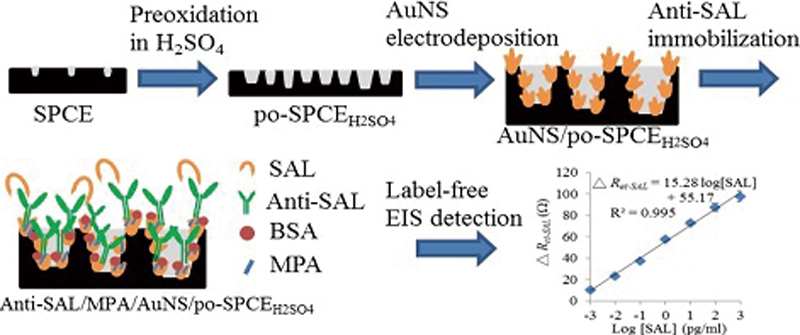Abstract
An ultrasensitive label-free impedimetric immunosensor is constructed by modifying a 3-mercaptoproponic acid (MPA) monolayer on highly rough gold nanostructure (AuNS)-electrodeposited screen printed carbon electrodes (SPCEs) for the detection of small molecular weight drugs (SMWDs), such as salbutamol (SAL). The SPCEs preoxidized in a 0.1 M H2SO4 solution (called po-SPCEH2SO4) are electrodeposited with the AuNS to increase the roughness factor to 23.64 ± 1.76, larger than the AuNS/po-SPCENaOH or the AuNS/po-SPCEPBS. Furthermore, the MPA modified layer as a link for the anti-SAL immobilization to give the immunosensors an impedimetric signal-to-noise ratio larger than the 11-mercapto-undecanoic acid- and 16-mercaptohexadecanoic acid-modified layer, due to the lower interfacial impedance of the MPA monolayer. The MPA/AuNS/po-SPCEH2SO4-based immunosensors have a wide linear range of 1 fg mL−1 to 1 ng mL−1 and a limit of detection of 0.6 fg mL−1. Moreover, the immunosensors can practically quantify the SAL concentrations in 1000 times-diluted serum samples with good recovery.



